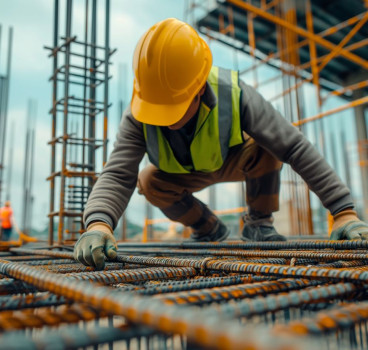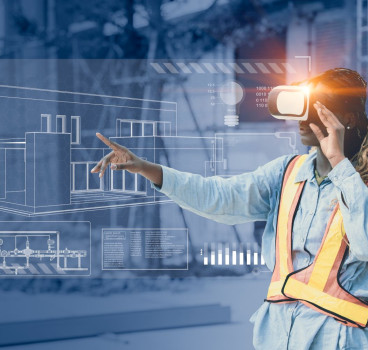Designing and constructing buildings that deliver mental wellbeing
For too long, the conversation around inclusive design in construction has rightly focused on physical accessibility – the essential ramps for wheelchairs, the clear signage for visual impairments, the accessible restrooms. These foundational elements are non-negotiable for enabling equitable access to the built environment. Yet, as our understanding of human diversity deepens, particularly concerning neurodiversity and mental wellbeing, it becomes profoundly clear that true inclusivity extends far beyond mere physical access, writes John Ridgeway.
It’s about creating environments that don’t just accommodate bodies, but also nurture minds, soothe nervous systems and genuinely enhance the daily experience for everyone, including and especially those with sensory processing differences such as autism, anxiety and other neurodivergent conditions. This is the realm of the "sensory build," a paradigm shift that recognises our buildings as powerful influences on our cognitive and emotional states.
The challenge lies in acknowledging that our senses are not universally regulated. What is a neutral environment for one person might be an overwhelming assault for another. A humming light, a flickering screen, a sudden loud noise, or a strong chemical smell, which go unnoticed by many, can trigger intense distress, anxiety, or even physical pain for someone with sensory sensitivities.
For individuals on the autism spectrum, those with ADHD, sensory processing disorder (SPD), or even chronic anxiety, these seemingly minor environmental stimuli can create significant barriers to learning, working, socialising, and simply existing comfortably within a space. This is about optimising human potential by designing environments that reduce unnecessary cognitive load and sensory overload.
One of the most critical elements in the sensory build is the meticulous consideration of acoustics. Traditional construction often prioritises structural integrity and cost-efficiency, with sound absorption being an afterthought. However, uncontrolled reverberation, external noise infiltration and even the cacophony of internal building systems can create an auditory landscape that is deeply dysregulating for many neurodivergent individuals.
Advanced acoustic design
Imagine a bustling open-plan office where every phone call, keyboard click and casual conversation creates a constant, indistinguishable hum, or a school corridor where echoes amplify every shout. For someone with heightened auditory sensitivity, this is not just distracting - it's physically jarring and mentally exhausting. The solution lies in integrating advanced acoustic design from the earliest stages. This means specifying sound-absorbing materials for walls, ceilings and floors – think specialised acoustic panels, textured surfaces and even strategically placed soft furnishings.
It also involves careful planning of room layouts to minimise sound transmission between spaces, utilising sound-dampening doors and partitions and designing HVAC systems for ultra-quiet operation. Creating designated "quiet zones" or "sensory retreat rooms" within larger buildings offers vital respite, but the ideal is to reduce overall sensory intensity throughout the general environment, allowing individuals to choose their level of engagement rather than being forced into constant overstimulation.
Equally impactful is the thoughtful manipulation of lighting. Beyond simply providing illumination, light profoundly affects our mood, energy levels and even our sleep cycles. For neurodivergent individuals, certain types of lighting can be particularly problematic. Fluorescent lights, with their subtle flicker (often imperceptible to the neurotypical eye but intensely irritating to others) and harsh, cool tones can induce headaches, eye strain and anxiety.
Overly bright or inconsistently lit spaces can also be overwhelming. The sensory build embraces principles of natural light harvesting, maximising the use of daylight through large windows, skylights and light shelves. This not only connects occupants with the outside world, promoting circadian rhythm regulation, but also provides a more natural, diffuse and less jarring form of illumination.
Where artificial lighting is necessary, the preference shifts towards warm, dimmable LED lighting with tuneable white capabilities, allowing users or building management systems to adjust colour temperature and intensity to suit different needs and times of day. Eliminating flickering sources is paramount, and incorporating indirect lighting that reflects off surfaces to create softer illumination can further reduce visual harshness.

The role of tactile and spatial considerations cannot be underestimated. The materials we touch, the textures we experience and the way a space flows can all contribute to a sense of comfort or discomfort. For some, certain textures like rough carpets or cold, hard surfaces can be unpleasant or even agitating. The sensory build advocates for a diverse palette of materials, incorporating natural elements like wood, cork and stone, which offer varied tactile experiences and often have inherent warmth and calming qualities.
Understanding the use of space
Furthermore, understanding spatial configurations is key. Open-plan layouts, while efficient, can be overwhelming due to a lack of defined personal space and constant visual stimulation. Designing spaces with clear pathways, defined zones and opportunities for both social interaction and quiet retreat offers individuals choice and control over their environment. This might involve creating alcoves, semi-enclosed workstations, or rooms with varying levels of visual privacy, allowing individuals to self-regulate their exposure to stimuli. The concept of "wayfinding" also extends beyond simple navigation; it includes clear, intuitive design that reduces cognitive load and anxiety associated with being lost or disoriented
The often-overlooked sense of smell also plays a significant role. Strong chemical odours from cleaning products, building materials, or even lingering food smells can be highly aversive for individuals with olfactory sensitivities. The sensory build emphasises the use of low-VOC (Volatile Organic Compound) materials, natural finishes and effective ventilation systems that introduce fresh air while filtering out irritants. Consideration is also given to the potential for incorporating natural, calming scents through integrated plant life or carefully managed essential oil diffusers in specific, well-ventilated areas, always with user sensitivity in mind.
Beyond these individual sensory considerations, the "sensory build" promotes an overarching philosophy of biophilic design and control. Biophilic design, the integration of natural elements and processes into built environments, has profound benefits for all occupants, particularly those with anxiety or sensory processing differences. This includes incorporating indoor plants, natural light, water features (designed for calming sounds, not distracting ones) and views of nature.
Connecting occupants with natural cycles and rhythms can significantly reduce stress and improve cognitive function. Furthermore, empowering individuals with control over their immediate environment is a powerful tool for wellbeing. This could mean easily accessible dimmer switches for lighting, individual temperature controls, adjustable acoustic panels, or privacy screens that can be deployed as needed. The ability to modify one's space to suit individual sensory preferences fosters a sense of psychological safety and autonomy.
Implementing these principles requires a fundamental shift in the construction process itself, moving from a reactive, accessibility-checklist approach to a proactive, integrated design philosophy. It starts with early engagement of neurodiversity consultants and occupational therapists alongside architects, engineers, and contractors. These specialists can provide invaluable insights into how different design choices impact sensory experiences. It necessitates a deeper understanding of material science, not just for structural integrity but for sensory properties.
Furthermore, training within the construction workforce is crucial. Builders, project managers, and even onsite trades need to understand why these specific design choices are being made. Understanding the impact of a minor deviation from acoustic specifications or the importance of proper ventilation to prevent lingering odours can mean the difference between a functional, inclusive space and one that causes distress.
This shift also impacts building information modelling (BIM) and digital twins, which can be utilised to simulate sensory environments, allowing designers to anticipate potential hotspots of sensory overload before construction even begins and enabling facilities managers to fine-tune environmental controls post-occupancy based on user feedback.
The "sensory build" is not about creating "special" buildings for "special" people. It's about recognising the inherent diversity of human sensory experience and designing environments that actively support wellbeing for everyone. A building that is thoughtfully designed with neurodiversity in mind - with calming acoustics, natural light, varied textures and opportunities for individual control - is a better building for all occupants, fostering greater productivity, reducing stress and promoting a more equitable and compassionate society. It's a testament to the power of design to not just house us, but to truly empower us. By moving beyond traditional accessibility standards and embracing the rich complexity of human sensory interaction, the construction industry has a profound opportunity to build not just structures, but genuine sanctuaries of comfort, focus and belonging.
Additional Blogs

What the UK can learn from global construction tech leaders
The UK construction sector stands at a critical crossroads. Mounting pressures - stagnant productivity, acute labour shortages, tightening safety requirements, ambitious carbon-reduction targets and...
Read moreAre architects losing their influence in the digital era?
For decades, architects have been the central creative force in construction, shaping the buildings we see and the way projects are conceived, communicated and delivered. Their role has been...
Read more

Why the word “Innovation” has lost its meaning in construction
“Innovation” has become one of the most overused terms in construction. It appears in the dozens of press releases we receive each day, conference talks and project reports, often without any real...
Read more